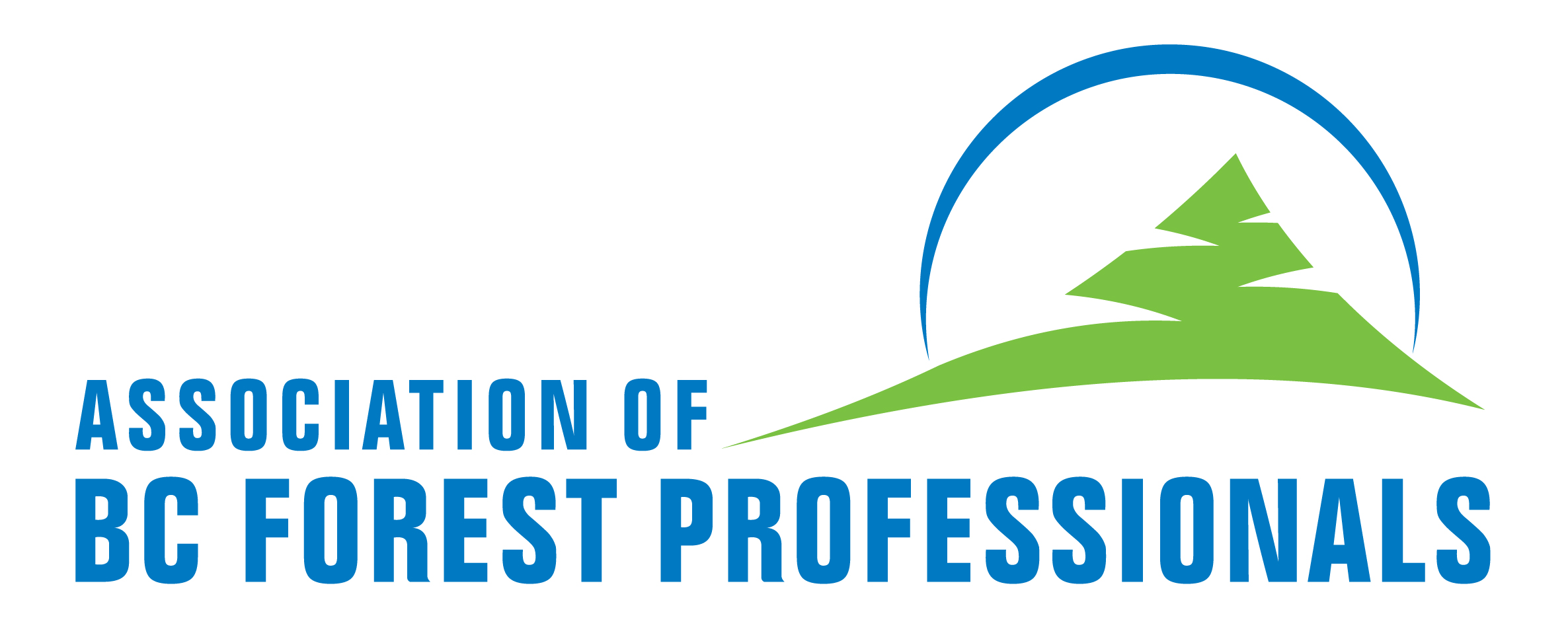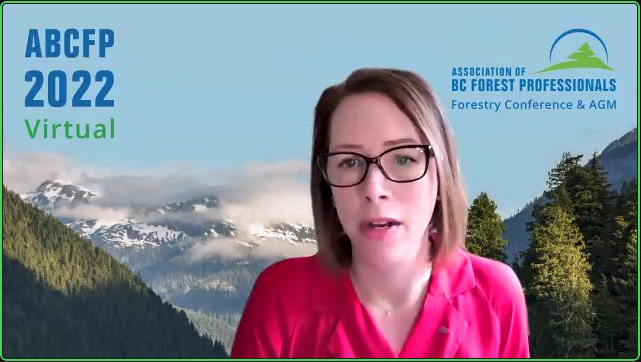 2021 ABCFP Business Report
2021 ABCFP Business Report
The Association of BC Forest Professionals held their 74th Annual General Meeting on February 2, 2022. This was the second virtual AGM and conference in the time of Covid, but the virus didn’t prevent members from participating, demonstrated by a record 2,000 people who registered for the 2022 conference.
CEO Christine Gelowitz, RPF, presided over the business meeting. She began her report with a review of the membership. As of November 2021, 5,499 people were registered in the association. This is down from previous years due to a large number of retirees leaving the profession. At the same time, the number of RFTs and RPFs has been in decline over the last 10 years. The good news is that this gap will soon be filled with a wave of 715 trainees entering the system. Gelowitz concluded by saying “we are in relatively good shape, but we need to continue to mentor new registrants and support recruitment to post-secondary forestry programs”.

Christine Gelowitz
Taking a closer look at the current membership Gelowitz pointed out a balanced age distribution of people representing a wide range of skill sets that include technical, planning and communications. Of some concern is the number of women in the profession, representing just over 22% of the membership. Although an increase of 6% since 2011, “we need to pay attention to this, otherwise we risk our ability to foster equitable policy, processes and practices for everyone,” cautioned Gelowitz.
It is the association’s responsibility to set standards within the profession. These include academic criteria for trainees and professional and ethical conduct standards for every registrant. Last year a new code of conduct was introduced with nine professional standards. Association staff produced materials to support understanding and adoption of the standards within the membership. As well, six new professional service practice guidelines were released in 2021 to support standards that relate to forest resource activities.
The ABCFP is a regulator, their core job to hold registrants accountable to the standards it sets. In 2021 the association had the highest number of complaints in a single year in its history. Of the 17 complaints, two are still under review and seven are in active investigation. The association must also guard against unlawful use of reserved practice rights and reserved titles. “Last year we received eight concerns, of which four prompted further detailed inquiry and one required enforcement action,” Gelowitz said.
Ensuring the ongoing competence of registrants is another regulatory role held by the association. In 2021, the ABCFP provided 85 hours of professional development—much of that free to registrants—responded to 137 requests for confidential practice/conduct advice and audited three percent of their practicing members.
“Without good governance and effective business operations, we can’t meet our duties under the Professional Governance Act,” said Gelowitz. She highlighted 14 new bylaws, 19 updated governance policies, 10 newly rewritten terms of reference for statutory committees and panels, and new program policies for continuing professional development and audits in support of governance. This included collaborative work with partners such as the Office of the Superintendent of Professional Governance and the College of Applied Biology, website updates, survey audits and changes to committees.
“Regarding the Professidonal Governance Act, my first takeaway message,” said Gelowitz, “is this – learn the difference between regulated and reserved practice”. The ABCFP regulates the conduct and practice of registrants who provide advice or service in relation to trees, forests, forest lands, forest resources, forest transportation systems or forest ecosystems. This, said Gelowitz, is a regulated practice.
Reserved practice is a subset of regulated practice, and only an ABCFP registrant is authorized to do it. “To identify reserved practice you need to apply a principle-based test that considers if there is a risk to the health, safety or welfare of the public including protection of the environment, and whether the experience or technical knowledge of an RPF or RFT is required to mitigate that risk,” explained Gelowitz. Learning the difference between regulated and reserved practice requires judgment and interpretation.
The Professional Governance Act has made it clear that advocacy can never be about member or registrant interests. The focus is on the public interest in the practice of professional forestry. “Advocacy isn’t gone from the profession,” said Gelowitz, “but it’s been refocused”. Forest stewardship is not gone from the work of the profession, it is a standard in the Code and is now defined by the association bylaws.
Although the association does not taking positions, Gelowitz said they did engage in some outreach that included an article in the Tree Frog News (about gaining perspective about the old growth technical advisory panel, and the foresters role in forest policy changes), meetings with government, a new social media campaign, participation in the Climate Change Adaption Network and outreach to 350 post-secondary students.
It’s important to emphasize that the ABCFP is more than just an organization, it’s a body of 5,499 individual forest professionals who can add to the outreach by talking to people in their networks and communities.
Our forests in BC are changing, as is policy and legislation, rights and ownership and the sentiment of the public. “Who better to navigate these changes than foresters?”, Gelowitz asked. “We are educated, professionally accountable and know how to balance perspectives and navigate tough conversations!”